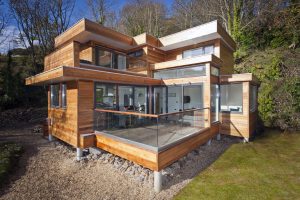Going environmentally friendly starting from the place you’d spend a great deal of your time on is a good move, especially when you’re considering buying or renting a living space. Eco-houses or eco-home is something that you’d hear often when the environment friendly topic comes up. Eco-home is the term for living spaces designed and built to reduce its environmental impact. There are no fixed criteria on what makes an eco-house. However in general, eco-houses have several common characteristics or features.

Better thermal insulation
Thermal insulation is one of the major factors in reducing the usage of energy, especially during extreme climates during winters and summers. Better insulation results in less energy consumption to control indoor temperature. It reduces the needs for electricity, natural gas, fuel oils, and other energy sources to heat or cool buildings.
Better levels of daylights
Too little or too much sun affect the usage of electricity greatly. The sun considerably affect the consumption of light and temperature-controlling devices. Building houses with a healthy access to sunlight is a major key in designing and building eco-houses.
Passive solar orientation
Solar houses are not just fancy names used in real estate marketing. Solar houses is an integral part when it comes to better, environmental living. The concept of these houses have existed since ancient times and it’s a strong fundamental in developing human dwellings. Passive solar orientation ensures the house receive a healthy amount of sun, making this house strategic for receiving a good amount of heat during winters, and shaded in such a way to protect against the summer heat.
Energy consumption from renewable resources
Natural renewable resources refers to resources that could be reproduced either through naturally recurring process or biological reproduction. Renewable resources commonly used at houses are solar energy, biomass, and heat pump.
Uses natural materials
Avoid the use of polyvinyl chloride (PVCs/PVCu) or other plastics. The waste and carbon impacts of such products to the environment is enormous and negative. One of the mejor house components that could use natural materials would be insulation. Fiberglass insulation, spray foam insulation, mineral wool, and cellulose are among good natural ingredients for thermal insulation.
Strategically uses plants for house improvement
Plants are the best natural devices when it comes to key factors in protecting and improving the house. Plants help regulate temperature, help block the winter winds and provides shade from the harsh summer sun. Plants are also excellent in purifying the air. It also helps reduce noises by blocking the outside noise. Planting evergreens and shrubs not only help improve the quality of your house, they also provide privacy.